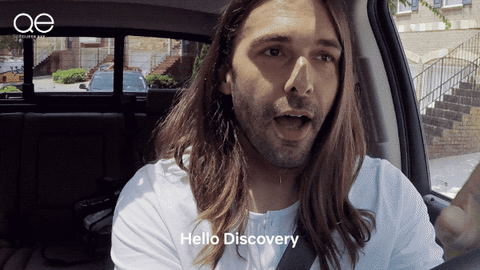Figure Skating and Forensic Science: they have more in common than you'd think!
You’re probably wondering where on Earth the title of this post comes from.
Well, as a postdoc at CSAFE, I think about forensic science pretty much every day. And as a self-proclaimed lifelong learner, I listen to podcasts pretty much every day. This week, as I drove to work, I was listening to “What’s it like to do a triple axel? with Mirai Nagasu” , an episode of Jonathan Van Ness’s podcast Getting Curious from April 2018. As Mirai and Jonathan1 were discussing the judging of figure skating and the many Olympic figure skating rivalries throughout history, I realized something unusual: figure skating and forensic science have a lot in common.2

Believe it
While I’m too young to remember Tonya Harding and Nancy Kerrigan’s rivalry, I do remember the Tara Lipinski / Michelle Kwan rivalry of the late 90s. If these names aren’t familiar to you, there’s always the old “Russian judge” trope, in which the frigid east block judge gives lower scores to western skaters3. But what do these figure skating examples have to do with forensic science?
Subjectivity.
To see the subjectivity of figure skating scores, compare figure skating to another winter olympic event: the biathlon. In the biathlon, the fastest time wins. It’s a rather complicated event, alternating between cross-country skiing and shooting, but in the end, there’s only one way to win: be the fastest skier and hit the most targets. It’s objective. In figure skating, however, judges have different perceptions, viewpoints, and backgrounds, so a perfect triple axel according to one judge could seem like a somewhat shaky jump to another, perhaps because they saw it from different angles, or one got more sleep than the other that day. Although they are both using the same basic metrics to judge (if the skater falls or misses a half turn they’d both notice that), grace, artistry, and perfection are hard to measure. So, figure skating scores are ultimately subjective, and this same type of subjectivity appears in many forensic science fields.
Subjective Science
In pattern evidence disciplines, such as ballistics, fingerprints, and footwear impressions, there is no completely objective method to arrive at a final conclusion. That being said, there are protocols that must be followed and objective characteristics that must be considered, such as the number of matching minutae on a fingerprint. These are the “triple axels” of forensic science: it is glaringly obvious to the “judge” when the evidence doesn’t “stick the landing,” but it is possible for two reasonable and knowledgeable experts to disagree on the final “score” (the strength of the identification or exclusion4).
Now, contrast that level of subjectivity with the objectivity of single-source DNA evidence. Using a method developed in genetics research called STR, analysts obtain a DNA profile from evidence found at a crime scene and compare it to a DNA profile from a suspect. One profile can have up to 20 independent measurements (called loci), and if at least one of the corresponding loci do not match in the two profiles, then an exclusion is made.5 Two experts would look at the profiles’ allele counts and make the same conclusion every time. Just like in the biathlon, the result is objective.
So what?
The next time you’re called to jury duty6, keep in mind that a lot of forensic science is like figure skating: while most experts will arrive at similar conclusions, you never know when a “Russian judge” is going to show up.

-
Dear Jonathan, if you’re reading this, thank you! And thank you for Getting Curious and Queer Eye. Also, I wanna be your best friend. ↩︎
-
Remember, I was driving when I thought of this, so I swear I was completely sober. ↩︎
-
Because, you know, communism. ↩︎
-
For example, you can read more about ballistics conclusions in the “Opinions and Conclusions” section here. ↩︎
-
More on DNA here: Norrgard, K. (2008) Forensics, DNA fingerprinting, and CODIS. Nature Education 1(1):35 ↩︎
-
Or accused of a crime. ↩︎